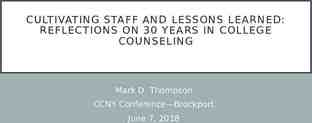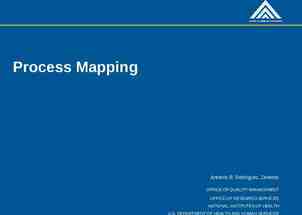Logic Puzzles Miran Kim Ben Seelbinder Matthew Sgambati
14 Slides356.00 KB

Logic Puzzles Miran Kim Ben Seelbinder Matthew Sgambati

What are logic puzzles? “A puzzle deriving from the mathematics field of deduction” Produced by Charles Lutwidge Dodgson A puzzle that can be solved using logical reasoning It helps work with rules of logic (and, or, xor, etc.) Programs that carry out logical reasoning use these puzzles to illustrate capabilities

The Master of Logic Puzzles High School dropout who got a Ph.D. in logic at Princeton Wrote many books on logic puzzles such as Alice in Puzzle-Land and To Mock a Mockingbird Most famous for his “Knights and Knaves Problem” Raymond Smullyan

Knights and Knaves I don’t lie! Neither do I! Encounter two people Knights always tell the truth Knaves always lie Figure out whether each person is a knight or a knave from their statements Example: A says, “At least one of us is a knave” and B says nothing

Knight and Knave Problem A says “At least one of us is a knave” and B says nothing. P(x): x is a knight P(x): x is a knave Suppose A is a knave. P(A) T What A says must be false P(A) P(B) F Check: P(A) P(B) T P(B) T Impossible A is a knight and what A says must be true. P(A) P(A) P(B) P(B) Answer: A is a knight. B is a knave.

Knight and Knave Problem A says “The two of us are both knight” and B says “A is a knave.” P(x): x is a knight P(x): x is a knave Suppose A is a knight. P(A) T What A says must be true P(A) P(B) T P(B) T However, B says P(A) T P(A) F Impossibl e Answer: A is a knave. A is a knave and what A says is false. P(A) T B is a P(A) P(B) F P(B) F knight. B is a knight because his statement (A is a knave) is true.

Knight and Knave Problem A says, “I am a knave or B is a knight” and B says nothing. – – A is a knight B is a knight Both A and B say, “I am a knight.” – Cannot determine the answer A says, “We are both knaves” and B says nothing. – – A is a knave B is a knight A says, “B is a knight” and B says, “The two of us are opposite types.” – – A is a knave B is a knave

Knight, Knave and Spy Problem from Alice in Puzzle-Land Added rule: Spy can lie or tell the truth. There is one spy, one knight, and one knave. A says that C is a knave. B says that A is a knight. C says “I a m the spy.” Which one is the spy, which one is the knight, which one is th e knave? Knight(x): x is a knight Knave(x): x is a knave Spy(x): x is a spy From C’s statement, C can’t be a knight because a knight nev er lie about his identity. Therefore, C is either a knave or a spy.

Knight, Knave and Spy Problem cont. from Alice in Puzzle-Land Suppose C is a spy. Knight(C) Knave(C) Spy(C) T Knave(C) T (simplification) Knave(C) F What A says is false, so A is knave. There is one spy, one knight, and one knave. A says that C is a knave. B says that A is a knight. C says “I am the spy.” Knight(A) Knave(A) Spy(A) T Knight(A) T (simplification) B must be a knight, and what B says must be true.Impossible Check: C isn’t a spy. Knight(A) T Knight(A) F Answer: C is a knave. A is telling the truth, so A is a knight. B is a spy.

Multiple Choice Help You encounter a problem on an exam with only answer choices, the q uestion has been omitted. Here are the answers: A. B. C. Answer A Answer A or Answer B Answer B or Answer C We may determine the correct answer using discrete math R(x): Answer x is right The correct answer must be the only one Suppose A correct ( R(A) True ), we have the following answers: R(A) R(A) R(B) R(B) R(C) T True T F TrueFalse F F False Knowing this may only have one correct answer, we can determine th at this answer is not right.

Multiple Choice Help Suppose R(B) True R(A) R(A) R(B) R(B) R(C) F False F T TrueFalse T F True F False F F False True F T True Suppose R(C) True R(A) R(A) R(B) R(B) R(C) Comparing each solution, we know that the correct answer must be C. We didn’t have to look at the question!

False Statement Which statement is false (assuming only one is false)? A. Statement D is true B. Statement A is false C. Statement B is false D. Statement C is true When statement B is true, it results in statement A being false, which results in statement D being false also. This results in more than one false statement, so statement B is the false one.

Conclusion What are logic puzzles? Who started logic puzzles? The master of logic puzzles – Knights and Knaves Method of thinking for logic puzzles Questions?

Pop Quiz! 1. The next question with the same answer as this one is: (A) 2 (B) 3 (C) 4 (D) 5 2. The first question with answer C is: (A) 1 (B) 2 (C) 3 (D) 4 3. The last question with answer A is: (A) 5 (B) 6 (C) 7 (D) 8 4. The number of questions with answer D is: (A) 1 (B) 2 (C) 3 (D) 4 5. The answer occurring the most is (if tied, first alphabetically): (A) A (B) B (C) C (D) D 6. The first question with the same answer as the question following it is: (A) 2 (B) 3 (C) 4 (D) 5 7. The answer occurring the least is (if tied, last alphabetically): (A) A (B) B (C) C (D) D 8. The highest possible score on this test is: (A) 5 (B) 7 (C) 6 (D) 8






